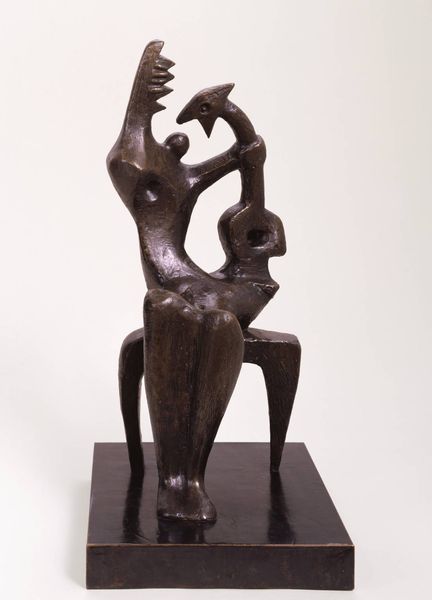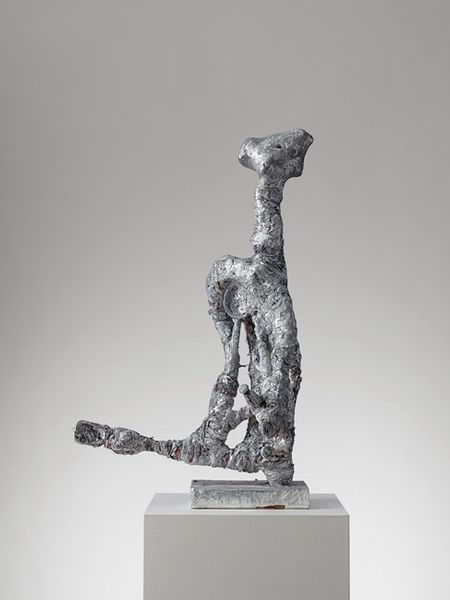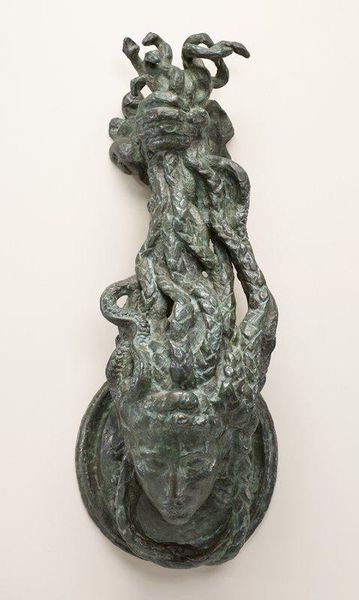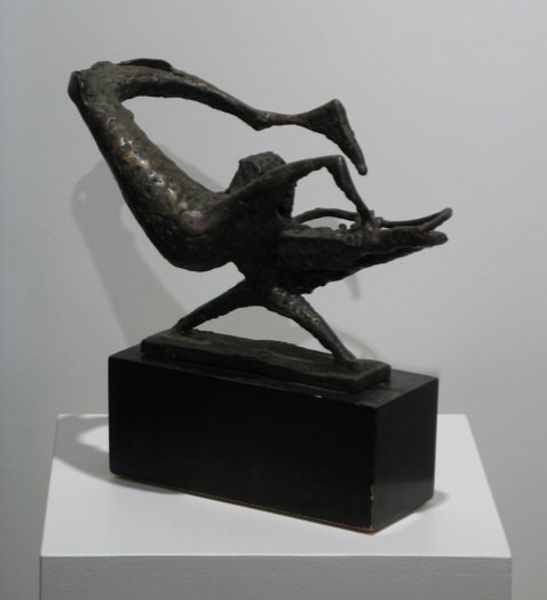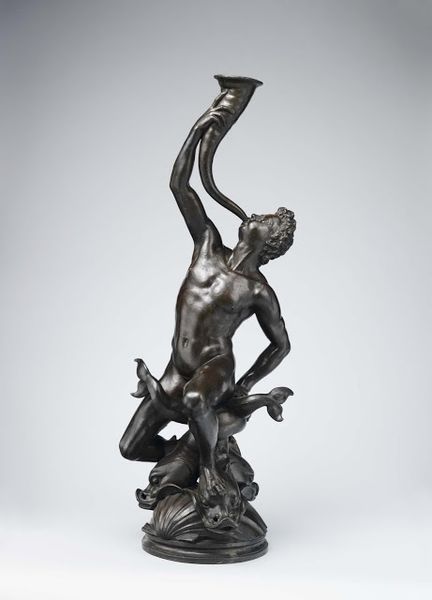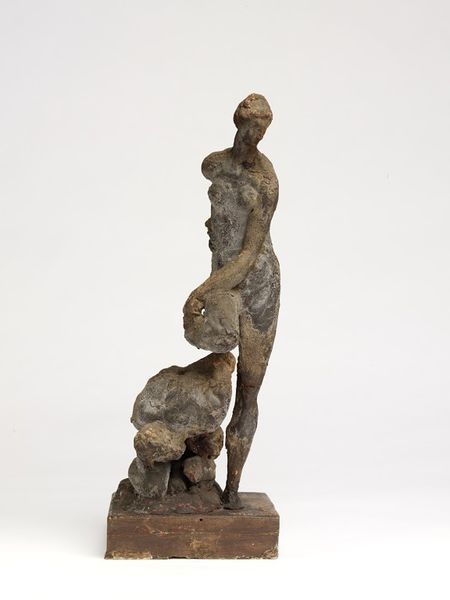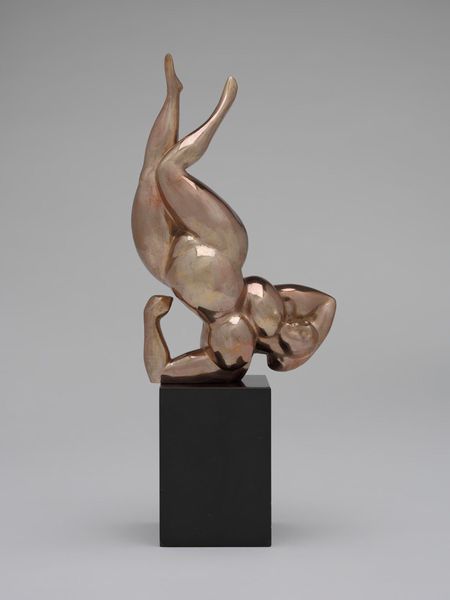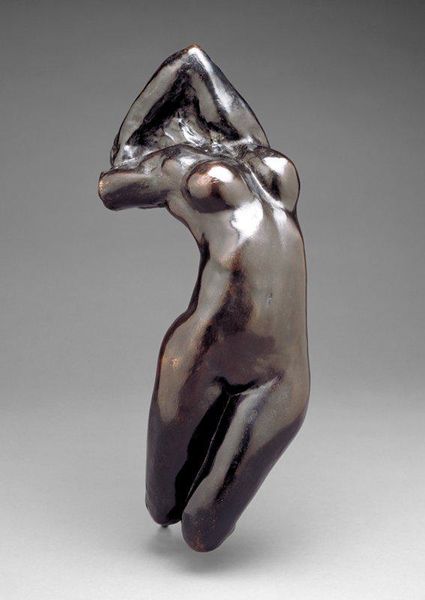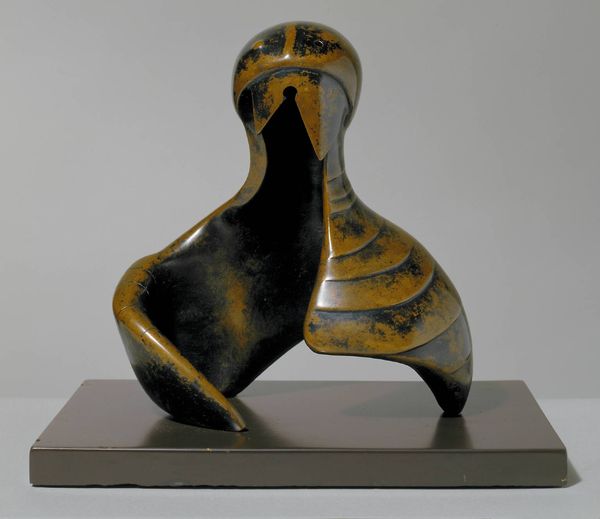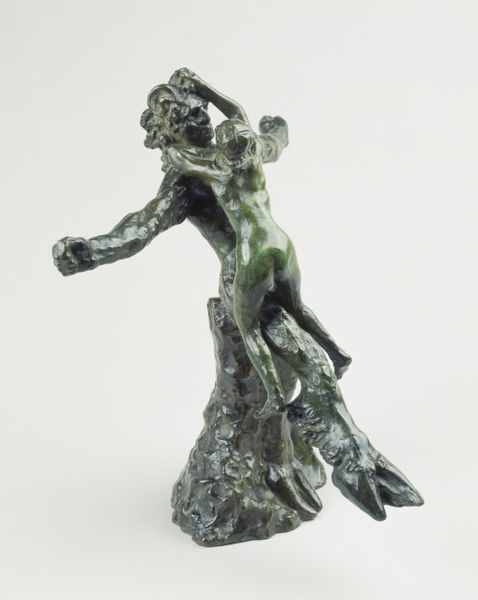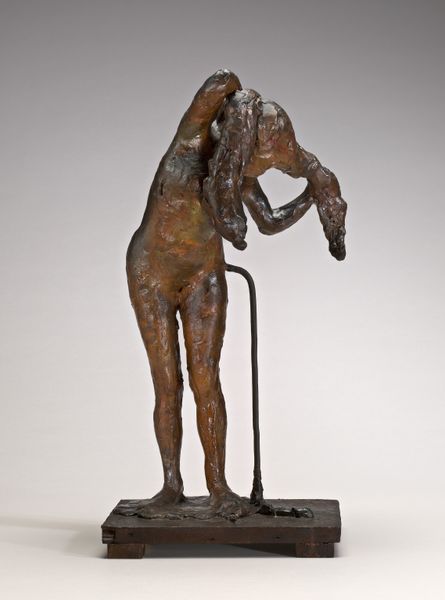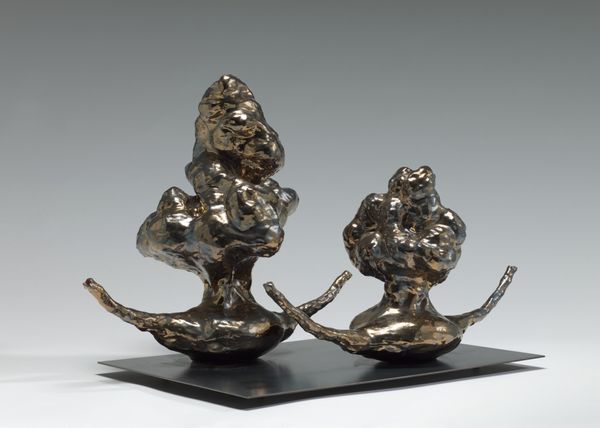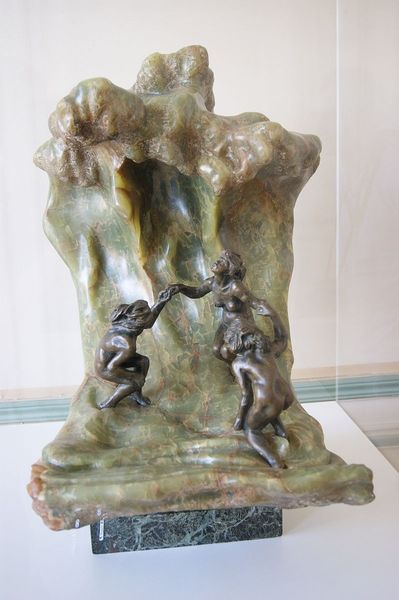
bronze, sculpture
#
sculpture
#
greek-and-roman-art
#
bronze
#
figuration
#
sculpture
#
erotic-art
Copyright: Reuben Nakian,Fair Use
Editor: This is Reuben Nakian’s bronze sculpture, *Leda and the Swan*, created in 1978. It strikes me as incredibly raw and visceral; not at all idealized. How do you interpret this work? Curator: This piece throws a punch. It pulls the ancient myth into a discomforting conversation about power and violation, doesn’t it? Nakian rejects the typical romanticization, and that aesthetic decision screams of a deliberate engagement with the darker undercurrents of these classical stories. Do you see the agency that Nakian gives the swan? Editor: Yes, the swan definitely dominates the scene; Leda is almost subsumed. The rough, almost violent, texture of the bronze adds to that feeling of tension and unease. It’s certainly not the Leda of Renaissance paintings! Curator: Exactly. We are challenged to examine the uncomfortable relationship between beauty, violence, and mythology, aren’t we? How does this departure from idealized forms contribute to the narrative, do you think? Does it invite us to question our own roles as viewers? Editor: That’s fascinating. The piece makes the viewer consider the ethics of witnessing a non-consensual act, both within the myth and now, centuries later, memorialized in art. Curator: Nakian’s piece reframes the whole Leda and the Swan narrative. By stripping away the seductive aesthetic, he forces a reckoning with the power dynamics inherent within the myth. This becomes a poignant critique of artistic traditions that often excuse or overlook acts of violence. It speaks to a broader feminist reading of historical narratives, right? Editor: I never considered how the medium and style could be just as critical as the subject matter. Thanks to Nakian’s choice, it’s an examination of how myth can either reinforce or subvert societal power structures. Curator: Absolutely, and I believe that's the piece's enduring relevance; its persistent urging to deconstruct historical and aesthetic conventions to unveil the inherent complexities of gender, power, and representation.
Comments
No comments
Be the first to comment and join the conversation on the ultimate creative platform.

